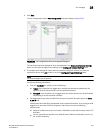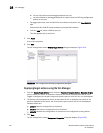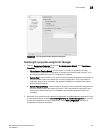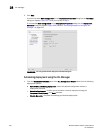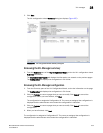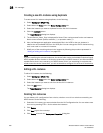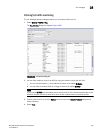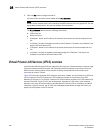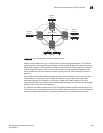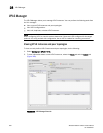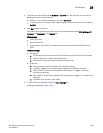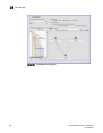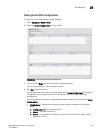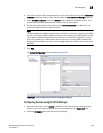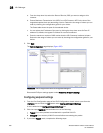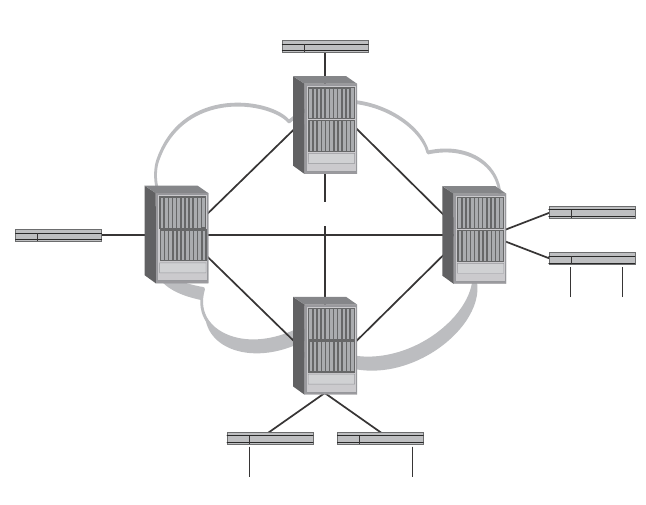
Brocade Network Advisor IP User Manual 883
53-1003056-01
Virtual Private LAN Services (VPLS) overview
28
FIGURE 359 VPLS configuration with two customer VPNs
Unlike a Virtual Leased Line (VLL), a VPLS instance can have multiple endpoints. The PE device
performs local and remote VLAN tag translation, so that multiple VLANs can be specified under a
single VPLS instance. A VPLS instance consists of a full mesh of VC LSPs between the customer’s
Provider Edge (PE) devices. The full mesh of PE devices in a VPLS configuration allows one PE
device to reach any other PE device in the VPN in exactly one hop, with no transit PE devices in
between.
A PE device performs MAC address learning, flooding, and forwarding for the CE devices in each
VPLS instance. For example, when PE device R1 receives a Layer 2 frame with a given MAC
destination address from Customer A’s CE device, it looks up the MAC address in a Layer 2
forwarding table that records associations between MAC addresses and VC LSPs. This forwarding
table is known as the VPLS MAC database.
The PE device uses MAC address found in the VPLS MAC database to find the associated VC LSP.
The PE device then encapsulates the frame as an MPLS packet and pushes an inner VC label and
outer tunnel label onto the packet. The packet is then sent over a tunnel LSP to the VC peer.
R1
R2
R4
R3
Customer A
Customer A
Customer A
Customer B
MPLS Domain
CE Device
CE Devices
CE Device
Customer B
CE Devices
VLAN 100
VLAN 200
VLAN 100
VLAN 200



